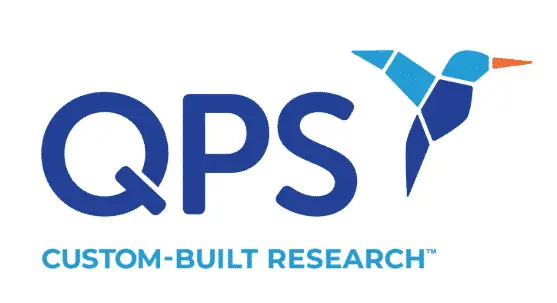What is it?
mRNA delivery by viral vectors is a promising approach in the field of gene therapy and vaccine development. Viral vectors are modified viruses that can be used to deliver genetic material, such as mRNA, into target cells. This technology has gained significant attention, especially in mRNA-based COVID-19 vaccine development, which has demonstrated high efficacy and safety profiles.

How do they work?
Different viral vectors can be used for mRNA delivery depending on mode of transport and method of introduction of genetic material.
Adenovirus Vectors:
Adenoviruses are common in both humans and a wide range of mammals, birds, and reptiles. They are chosen as vectors based on their ability to efficiently infect a wide range of cells. Modified adenovirus vectors carry mRNA encoded for production of a specific protein.
Adenoviruses have a non-enveloped, icosahedral (20-sided) capsid structure that contains the genetic material. Adenoviruses are typically transmitted through respiratory droplets, oral or sexual contact. This vector is associated with a wide range of illnesses including respiratory, gastrointestinal and eye infections. Modified adenoviruses have been extensively used as viral vectors in vaccine development, most notably in the development of SARS-CoV vaccines. These vectors carry genetic material that produces specific antigens (e. q. the spike protein of the SARS-CoV-2 virus) to trigger an immune response.
Lentivirus Vectors:
Lentiviruses are chosen when transport requires stable integration of genetic material into the host. Lentivirus vectors can be designed to carry mRNA for transient expression or integrate the mRNA into the host DNA for long-term expression.
A lentivirus is in a family of viruses that can integrate their genetic material into the host cell with the key property of the ability to cause slow and progressive infections, and they have a unique feature of infecting both dividing and non-dividing cells. Lentiviruses have a single-stranded RNA genome, which they convert into DNA through a process called reverse transcription. This DNA can then integrate into the host cell’s genome and as an added bonus its effects persist in the host for a long term. Lentiviruses can infect a wide range of cell types including both immune cells (e. q. T cells and macrophages) and non-immune cells. Lentiviruses have been extensively studied and modified for gene therapy research purposes including one of the most well-known lentiviruses, HIV (human immunodeficiency virus). It is important to note that while lentiviruses like HIV can cause severe diseases, not all lentiviruses are pathogenic.
Retrovirus Vectors:
Of the same family as lentiviruses, retrovirus vectors can be used for long-term expression of mRNA through integration into the host genome. Like lentiviruses these vectors are based on retroviruses, a family of RNA viruses known for their ability to reverse transcribe their RNA genome into DNA and integrate it into the host’s genome. Retroviruses are also characterized by their ability to create a stable, long-term relationship with the host cell. Retroviruses differ from lentiviruses in that they tend to infect only specific cell types and their ability to infect non-dividing cells is restricted.
Vesicular Stomatitis Virus (VSV) Vectors:
This virus primarily infects animals, such cattle, horses, and pigs. VSV is a single-stranded RNA vector which has been implemented in a variety of mRNA delivery vaccines. VSV is transmitted to animals and humans through biting insects, such as sandflies, black flies, and mosquitoes.
VSV has been studied in laboratories and used as a model virus for various research purposes, including studies on viral replication, gene expression, and vaccine development. Modified VSV vectors have also been used in the development of vaccines for other diseases, including some viral vector-based COVID-19 vaccines. A weakened form of VSV has been used to develop vaccines to help prevent the spread of the virus among livestock. Again, it is important to note that while VSV can cause illness in both animals and humans but infections in humans are typically short-term and rarely severe.
What are the advantages of mRNA delivery by viral vectors over other methods?
Viral vectors are highly efficient at delivering genetic material into target cells, ensuring a high level of mRNA expression. Viral vectors can sustain long-term stable expression of the mRNA. Vectors can be engineered to target specific cell types or tissues, allowing for precise mRNA delivery.
What are the challenges of using a viral vector as a mRNA transporter?
Viral vectors can trigger an immune response in the host, which may limit their effectiveness. There are also safety concerns associated with the use of viral vectors, namely the risk of unintended genomic integration or the potential for the vector to revert to its virulent form. Some viral vectors have limited size capacity, which can be a factor when delivering larger mRNA sequences.
Where have mRNA viral vectors been used?
Viral vectors have been widely used in mRNA vaccines. One excellent example is the COVID-19 vaccines which delivers mRNA code to produce a viral spike protein. This prompts an immune response without causing the disease itself. Viral vectors have been used in gene therapy to deliver therapeutic mRNA to treat genetic disorders, such as cystic fibrosis or muscular dystrophy. Finally, viral vectors have been successfully used in personalized cancer immunotherapy to deliver mRNA encoded tumor-specific antigens, used to kill cancer cells.
Summary
Ongoing research aims to improve the safety and efficiency of viral vectors for mRNA delivery. This includes the development of novel vector designs, optimization of delivery methods, and strategies to diminish immunogenicity. Delivery of mRNA by viral vectors holds great promise for various biomedical applications, from vaccines to gene therapy to cancer treatments. While challenges remain, ongoing research and advancements in vector technology continue to enhance the potential of this approach for the treatment and prevention of various diseases.
QPS is a GLP- and GCP-compliant contract research organization (CRO) delivering the highest grade of discovery, preclinical and clinical drug research development services. Since 1995, it has grown from a tiny bioanalysis shop to a full-service CRO with 1,100+ employees in the U.S., Europe and Asia. Today, QPS offers expanded pharmaceutical contract R&D services with special expertise in neuropharmacology, DMPK, toxicology, bioanalysis, translational medicine and clinical development. An award-winning leader focused on bioanalytics and clinical trials, QPS is known for proven quality standards, technical expertise, a flexible approach to research, client satisfaction and turnkey laboratories and facilities. Through continual enhancements in capacities and resources, QPS stands tall in its commitment to delivering superior quality, skilled performance and trusted service to its valued customers. For more information, visit www.qps.com or email info@qps.com.







